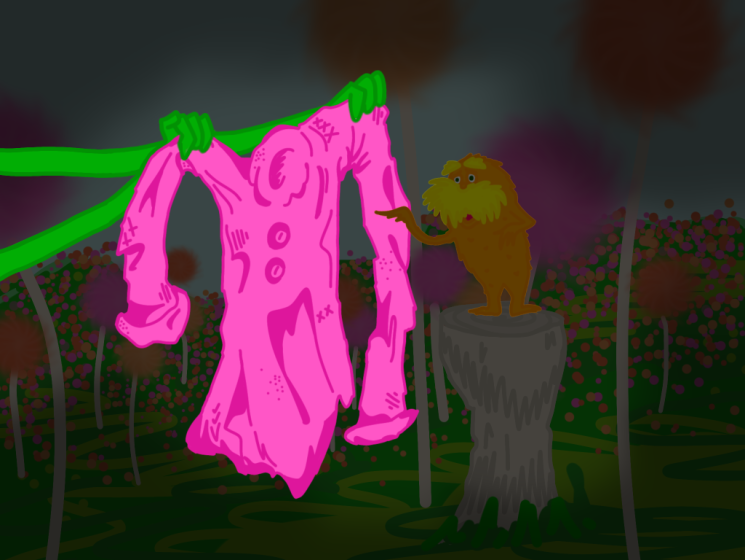
By Myra Chen
“The Lorax” is a 2012 book-to-movie animation that struck the hearts of children and adults alike. The theme of environmental concerns in “The Lorax” remains relevant in society to this very day. The growing demand for a product caused the Truffula forest and all of its creatures, including the Lorax, to disappear. And the product in question? The thneed, a “highly versatile object knitted from the foliage of a Truffula Tree.”
Versatile is an understatement; in the movie, the thneed is able to take the form of a shirt, sock, hat, scarf, skirt and a pair of pants. The thneed is not limited to clothing: a butterfly net, sponge, tablecloth, horse saddle, lampshade, ribbon streamer and reusable diaper are all within the thneed’s capabilities. Even more unrealistically, it can be a toothbrush holder, hair grooming product, carbureted rust eliminator, basketball hoop, batting cage, windshield wiper or a mustache brush. The list continues, pretty extensively.
This highly coveted thneed is but a mere piece of fiction, sorry to break all of your hearts. Still, its premise still stands in real life. We all need a versatile piece of clothing that can be worn in many different ways. But what makes a piece of clothing truly versatile? The ability to be both a shirt and a batting cage at the same time? Maybe.
Versatility in an article of clothing presents itself in color, texture and quality.
Neutral colors like black, white, gray and brown can be easily incorporated into any outfit, paired with most other colors. Simple textures that are not too flashy can be both dressed down into a casual, everyday look or dressed up into a going-out, picture-worthy look. Fabrics that are good quality can last a long time and reduce the amount of consumerism in the long run.
Contrary to what “The Lorax” suggests, owning a thneed may be better for our environment. A large issue today is the amount of over-consumerism that comes with the influencer lifestyle, as seen on apps like TikTok. Influencers, sponsored to make innovative videos of their newest purchase, influence people to participate in unrealistic materialism. As the youth buy more and more to keep up with the latest trends, a greater strain is placed on the supply chain.
Brands like Shein, H&M and Forever 21 are infamously known for their clothing that lasts only a few wears before disintegrating in the washing machine. Still, they stay in business for their ability to keep up with microtrends and their low price accessibility. Not only does this create more waste in the environment, but pressure is built on factory and delivery workers to keep up with demand.
By investing in timeless pieces that transcend short-lived trends, we can work towards a more sustainable future. A future where the legacy of the Truffula forest and its whimsical creatures continue to thrive.





